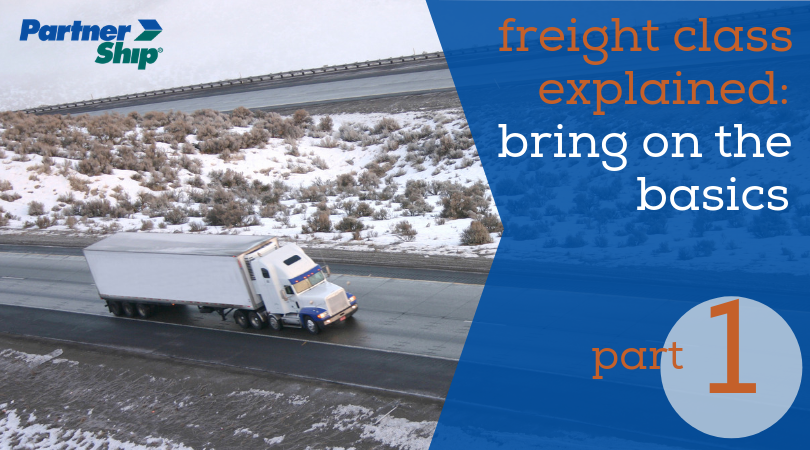Freight Class Explained: Bring on the Basics
02/13/2019 — Jen Deming

Freight class is a critical component of shipping your LTL loads. But it's confusing and making a guesstimate is risky business. Your shipment's freight class plays a huge part in from everything from your initial freight rate estimate to your payout for any potential damage claims. How can a little number mean so much?
What is a freight class?
Prior to understanding class number, shippers need to grasp the importance of the NMFC, or National Motor Freight Classification. Every type of product or commodity has a numeric code assigned to identify it within a categorical system, similar to a UPC used within a grocery store. The code also breaks down these products into over-arching groups, which then tell you how to class your product. There are 18 freight classes that range from 50 to 500. Your freight class helps the carrier determine how much to charge for your shipment, along with other factors such as weight and distance traveled, as well as any additional requested services. Typically, the higher the class, the more expensive the subsequent freight rate.
What factors determine a freight class?
There are four factors that influence the classification of different commodities; each affects the difficulty in transporting the freight and increases the freight class.
- Density - The space an item takes up as it relates to weight. The higher the density, the lower the classification. Low density shipments take up a lot of space but weigh less, making the shipment unprofitable to carriers. More classifications are becoming density-based as capacity becomes crunched and larger, less standard types of freight are entering the network to be shipped.
- Storage/Stowability - This refers to how easily freight can be stored and stacked on the truck, and how much space it takes up. Similar to density, if a shipment is large, oddly-shaped, or difficult to fit in the truck, the load becomes undesirable. .A higher freight class is assigned in order to reflect the added work to fit in the load.
- Handling - Similar to storage and stowability, the more difficult it is to load and unload a shipment affects freight class. A shipment that requires more creativity and flexibility to load and unload will increase the class.
- Liability - Carriers assign higher freight classes to "high risk" shipments in order to limit their accountability for those shipments that are more likely to be damaged in transit or have an increased risk for freight theft. If you have high value or fragile products, it will be reflected in a higher freight class to offset that risk.


It goes even further than that, breaking down into subgroups which determine freight class depending on packaging and size. This is why it is imperative to know the precise weight and dimensions of your shipment. In our example, our slate blocks are in crates 48 in. long, which falls under the subgroup 4 - class 65. Compare that to crated slate blocks longer than 96 in., which would be class 85. This is an increase, but shouldn't affect pricing drastically. When packaging type is adjusted, however, the class is increased significantly. By palletizing the slate blocks (subgroup 1), freight class jumps to 250. At this weight, the final freight rate can be raised by hundreds of dollars.
In the Slate Blocks, Pieces or Slabs group, you can also reference three separate notes that are relevant to the details of the shipment:

These details are notable, because it gives further direction on how best to package your freight for both safety and security. In 90282, the note states that "pieces or slabs 2 in. or less in thickness" must be boxed or crated and marked "fragile." We see more packaging direction in 90283 regarding exposed surfaces and edges and requirement for wrapping and other protection. This is to hopefully limit damage, but shippers must also be mindful that if freight falls within this category, and it is not packaged as directed, a damage claim will likely be denied by the carrier.
